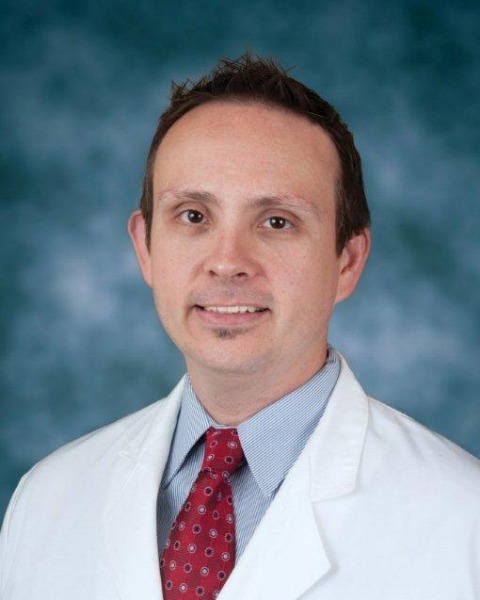Disparities in Surgical Oncologic Care
E131: Esophageal Cancer in Hispanics: A Propensity Score Matched Analysis of the National Cancer Database

Kenneth Meredith, MD, FACS, FSSO
Chief of Surgical Oncology, Professor of Surgery
Jellison Cancer Institute, Florida State University College of Medicine, Sarasota Memorial Healthcare System
Sarasota, Florida, United States
Kenneth Meredith, MD, FACS, FSSO
Chief of Surgical Oncology, Professor of Surgery
Jellison Cancer Institute, Florida State University College of Medicine, Sarasota Memorial Healthcare System
Sarasota, Florida, United States
Kenneth Meredith, MD, FACS, FSSO
Chief of Surgical Oncology, Professor of Surgery
Jellison Cancer Institute, Florida State University College of Medicine, Sarasota Memorial Healthcare System
Sarasota, Florida, United States- JH
Jamie Huston, MS
Research
Jellison Cancer Institute, United States - RS
Ravi Shridhar, MD, PhD
Radiation Oncology
Advent Health Orlando, United States
ePoster Abstract Author(s)
Submitter(s)
Author(s)
Hispanics are the fastest-growing minority and largest ethnic group accounting for 19.1% of the US population. The American Cancer Society estimated 21,560 new cases of esophageal cancer (EC) in the US in 2023. Hispanics are reported to be at high risks for EC. We sought to interrogate the demographic patterns of esophageal cancer in Hispanics. Additionally, we sought to examine evidence of socioeconomic disparities and differential therapy.
Methods:
We identified Hispanic vs Non-Hispanic (NH) patients in the National Cancer Database with esophageal cancer between 2005–2018. Variables compared were age, sex, tumor data, surgical intervention, type of treatment, insurance status, income, residence area, and Charlson/Deyo score. Pearson’s Chi-square test was used to compare categorical variables. Groups were statically equated with propensity score-matched analysis (PSM). Survival analysis was estimated by the Kaplan-Meier method and associated log-rank test.
Results:
We identified 66,335 patients with a median age of 63 years (18-90). Hispanics represented 4.2% (2,786) of the entire patient cohort. Differences among Hispanics included higher prevalence of squamous EC (22% vs 19%) p< 0.001, higher likelihood of stage IV disease (40.7% vs. 34.8%) p< 0.001, younger age p< 0.001, higher uninsured status (10.3% vs 3.3%) with income < $40,227 (27.5% vs 16.9%) p< 0.001 when compared to NH. However, Hispanics were less likely to have surgical intervention (20.5% vs 27.5%) p< 0.001, receive neoadjuvant therapy (61.8% vs 72%) and overall, less likely to receive any type of treatment (30.1% vs 26.1%) when compared to NH p< 0.001. Time to treatment was delayed in those Hispanics who were uninsured 37 weeks (22-55) compared to those with private insurance 31 weeks (20-47) p< 0.001. Treated Hispanics demonstrated no difference in survival then their treated non-Hispanic counterparts (median survival 18.5 vs 18.7 months) with overall 5-year survival at 24% and 25% respectively (p=0.66). PSM MVA demonstrated that any treatment, insurance status, and lower income were predictors of survival.
Conclusions: Despite lower prevalence, there is a disproportionately higher number of metastatic and untreated esophageal cancer cases among Hispanics. This disparity may be explained by Hispanics' limited access to medical care exacerbated by their socioeconomic and insurance status. Our findings warrant further investigation to reveal other factors impacting these health and health care disparities.
Learning Objectives:
- Identify limitations to the treatment of esophageal cancer among Hispanics.
- Evaluate socioeconomic factors limiting access to care for Hispanic patients
- Understand outcomes of Hispanic and Non-Hispanic undergoing treatment for esophageal cancer
